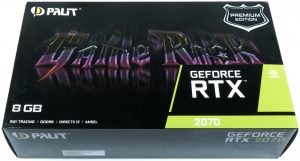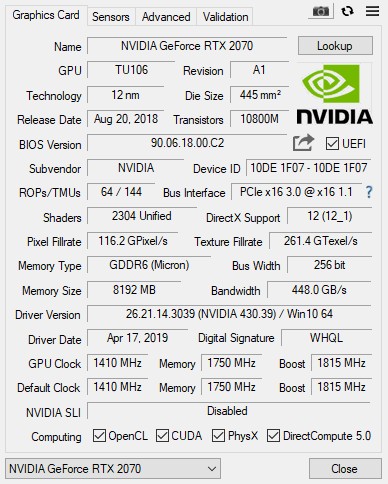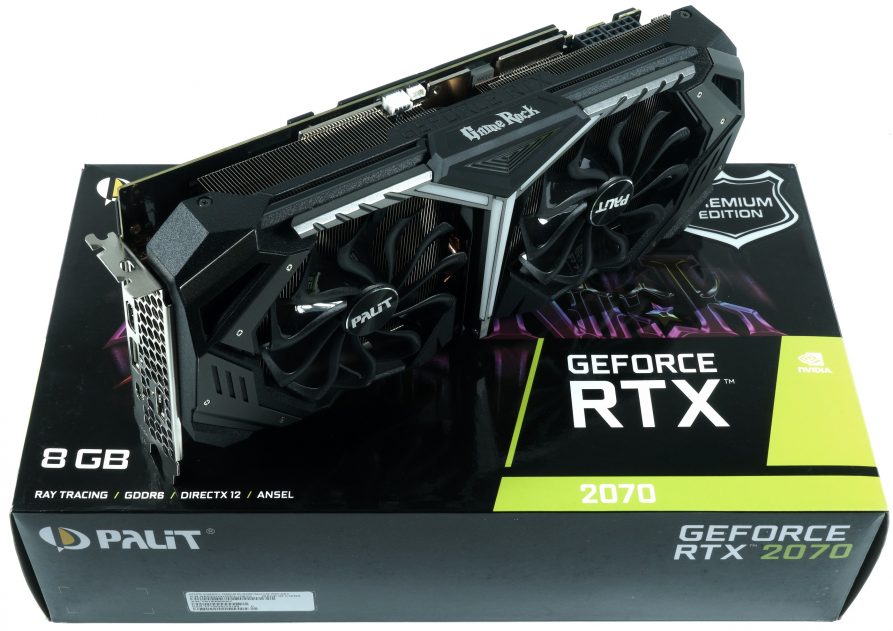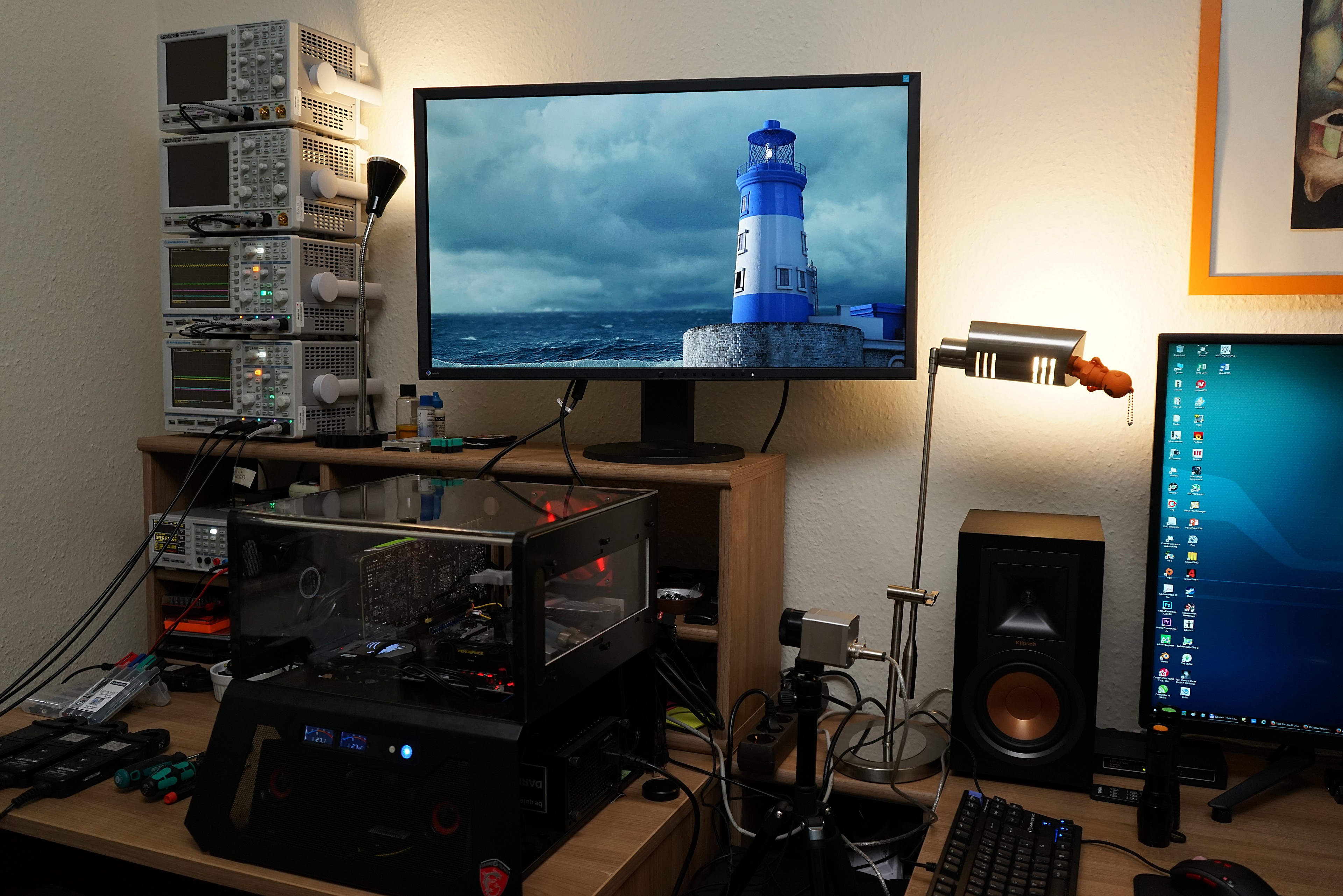 We know some heavy guys, but with the current GeForce-RTX models, Palit has taken a lot to heart, which has been repeatedly called for in the previous models. And the Game Rock Premium Edition (GRPE) really lives up to its name, because the part is a real mountain of graphics card, almost a small mountain. But I don’t want to pre-empt the test, but I can’t hide the fact that I was already quite tense.
We know some heavy guys, but with the current GeForce-RTX models, Palit has taken a lot to heart, which has been repeatedly called for in the previous models. And the Game Rock Premium Edition (GRPE) really lives up to its name, because the part is a real mountain of graphics card, almost a small mountain. But I don’t want to pre-empt the test, but I can’t hide the fact that I was already quite tense.
The cooler is a complete new construction and relies on very large contact surfaces, as we will see in a while. The fans are also more or less new and inappropriate experiments such as Vortex fans are also thankfully dispensed with here. You can see that not only the cover has been redesigned, but that it is really a real reboot that not only works on the optics.
With 1302 grams, the card was given a good hip gold this time. And that’s a good thing, because somewhere the cooling surface has to come. The card is 29.5 cm long between the outer edge slot panel and the end of the radiator cover, measures 12.5 cm from the top edge slot panel to the top of the graphics card housing and is even 5.5 cm thick. In addition, there is another 0.5 cm for the blackened backplate.
The cover is made of matt black plastic with applied applications in gunmetal look and of course there are still RGB-illuminated, translucent inserts in the front. A bit of fun has to be easy and if you like to tap in the dark, you can also drag the roller blind down to night mode via software. The two fairly flat 9.7 cm fans, each with 11 rotor blades, both sit in a 10 cm opening.
The video outputs are the minimum assembly for the maximum controllable 4 output devices from Nvidia: once HDMI 2.0 meets 3x DisplayPort 1.4. In addition, there is the USB Type C. Palit delivers the card with two external ATX power supply ports (8-pin + 6-pin). But more on top of that The screenshot of GPU-Z gives us a first impression of the factory overclocked card, which also comes to the customer with a dual BIOS, which however relies on identical specifications and is a pure security feature:

Technical data and comparison maps
At the end of this introduction, the maps of the new generation and those of the old generation in direct tabular comparison:
| GeForce RTX 2070 FE |
Palit RTX 2070 GRPE |
GeForce GTX 1070 FE |
GeForce RTX 2080 FE | |
| Architecture (GPU) |
Turing (TU106) | Turing (TU106) | Pascal (GP104) | Turing (TU104) |
| CUDA Cores |
2304 | 2304 | 1920 | 2944 |
| Tensor Cores |
288 | 288 | N/A | 368 |
| RT Cores |
36 | 36 | N/A | 48 |
| Texture Units |
144 | 114 | 120 | 184 |
| Base Clock Rate |
1410 MHz | 1410 MHz | 1506 MHz | 1515 MHz |
| GPU Boost Rate |
1710 MHz | 1815 MHz | 1683 MHz | 1800 MHz |
| Storage expansion |
8GB GDDR6 | 8GB GDDR6 | 8GB GDDR5 | 8GB GDDR6 |
| Storage bus |
256-bit | 256-bit | 256-bit | 256-bit |
| Bandwidth |
448 GB/s | 448 GB/s | 256 GB/s | 448 GB/s |
| Rops |
64 | 64 | 64 | 64 |
| L2 Cache |
4MB | 4MB | 2MB | 4 MB |
| Tdp |
185W | 215 W | 150w | 225 W |
| Transistors |
10.8 billion | 10.8 billion |
7.2 billion | 13.6 billion |
| The size |
445 mm2 | 445 mm2 | 314 mm2 | 545 mm2 |
| Sli |
No | No | Yes (MIO) | Yes (1x NVLink) |
Test system and measurement methods
We have already described the new test system and the methodology in detail in the basic article “How We Test Graphics Cards, as of February 2017″ and therefore refer to this detailed basis for simplicity. Description. So if you want to read everything again, you are welcome to do so.
If you are interested, the summary in table form quickly provides a brief overview:
| Test systems and measuring rooms | |
|---|---|
| Hardware: |
Intel Core i7-8700K x 5 GHz MSI Z370 Gaming Pro Carbon AC 16GB KFA2 DDR4 4000 Hall of Fame 1x 1 TByte Toshiba OCZ RD400 (M.2, System SSD) 2x 960 GByte Toshiba OCZ TR150 (Storage, Images) Be Quiet Dark Power Pro 11, 850-watt power supply |
| Cooling: |
Alphacool Ice Block XPX 5x Be Quiet! Silent Wings 3 PWM (Closed Case Simulation) Thermal Grizzly Kryonaut (for cooler change) |
| Housing: |
Lian Li PC-T70 with expansion kit and modifications Modes: Open Benchtable, Closed Case |
| Monitor: | Eizo EV3237-BK |
| Power consumption: |
non-contact DC measurement on the PCIe slot (Riser-Card) non-contact DC measurement on the external PCIe power supply Direct voltage measurement on the respective feeders and on the power supply 2x Rohde & Schwarz HMO 3054, 500 MHz multi-channel oscillograph with memory function 4x Rohde & Schwarz HZO50, current togor adapter (1 mA to 30 A, 100 KHz, DC) 4x Rohde & Schwarz HZ355, touch divider (10:1, 500 MHz) 1x Rohde & Schwarz HMC 8012, digital multimeter with storage function |
| Thermography: |
Optris PI640, infrared camera PI Connect evaluation software with profiles |
| Acoustics: |
NTI Audio M2211 (with calibration file) Steinberg UR12 (with phantom power for the microphones) Creative X7, Smaart v.7 own low-reflection measuring room, 3.5 x 1.8 x 2.2 m (LxTxH) Axial measurements, perpendicular to the center of the sound source(s), measuring distance 50 cm Noise in dBA (Slow) as RTA measurement Frequency spectrum as a graph |
| Operating system | Windows 10 Pro (1809, all updates) |










































Kommentieren